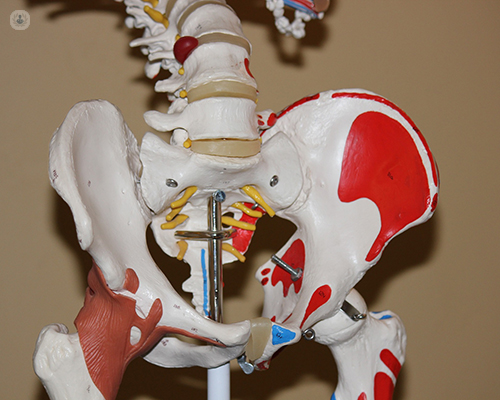Hip osteoarthritis, it is, because it is listed as
Written by:
What is hip osteoarthritis?
Osteoarthritis is the most frequent disease of our joints and also the most frequent motive of musculoskeletal disability. It is characterized by a wear of the layer of cartilage that covers our joints forming, instead, a bone tissue. The hip joint consists of a hemispherical cavity that is the acetabulum of the pelvis and a ball that articulates in it that is the head of the femur.. Both surfaces covered with cartilage. The cartilage is a tissue that cushions the loads and, in turn, is a smooth and smooth coating that allows the movements of a joint.
But from the age of 30 the cartilage ages rapidly and becomes softer and more fragile. Fissures and erosions appear on its surface that leave the bone exposed. As a consequence, the articulation of the hip with osteoarthritis becomes irregular and with it the limitation of mobility, pain and disability appears.
How is hip osteoarthritis manifested?
Mainly manifested with discomfort , pain usually appears with mobility of the joint and walking. And it usually disappears with rest, but in later stages the pain may be nocturnal and interrupt sleep.

What factors are predisposing to hip osteoarthritis?
They can be a family history, since osteoarthritis is hereditary , obesity -predispon to osteoarthritis since overweight overloads our joints-. Likewise, those jobs that imply an overload or a continuous impact on our hips also predispose to hip osteoarthritis. And finally, some diseases such as rheumatoid arthritis or congenital malformations of the hip or trauma or fractures in the hip can also predispose to this disease.
What is the initial treatment for hip osteoarthritis?
There are several forms of treatment, first we recommend eliminating overweight, weight loss contributes significantly to reduce pain in hip osteoarthritis. We also advise soft exercises that allow to maintain mobility and avoid atrophy of the hip muscles. In the initial phases some anti- inflammatory drugs or physiotherapy can also help, however, with the passage of time these measures are no longer effective and the disability becomes increasingly greater and it is at that moment when we consider the possibility of an operation to Place the hip prosthesis .
When should a prosthesis be placed?
The placement of a hip prosthesis is indicated when the joint has an advanced wear and other treatments have been tried without success. The surgical procedure consists of removing the damaged parts of the joint and replacing them with components called implants.. These implants consist of a hemispherical acetabulum to replace the acetabulum of the pelvis and a stem that is inserted into the femur to which a spherical head is connected.. The materials of these implants are compatible with our fabrics (polyethylene, ceramics or metals such as titanium or chromocobalt). There are models of prosthesis that are fixed to the bone with the help of a special acrylic cement and other models that are placed without cementing and require an adjustment, a lace, perfect to the bone. These implants have a rough surface and some micropores through which the bone grows, in this way, the uncemented implants are fixed or integrated in a practically biological way on the bone surface.. Generally the prostheses are cemented to the bone in the elderly or in people with weak bones and are placed uncemented in the strongest and youngest bones.
What is the duration of the prosthesis?
Hip prostheses have a limited life that vary from one person to another. With the new materials their duration is greatly extended, which could be calculated from 12 to 15 years or more.



